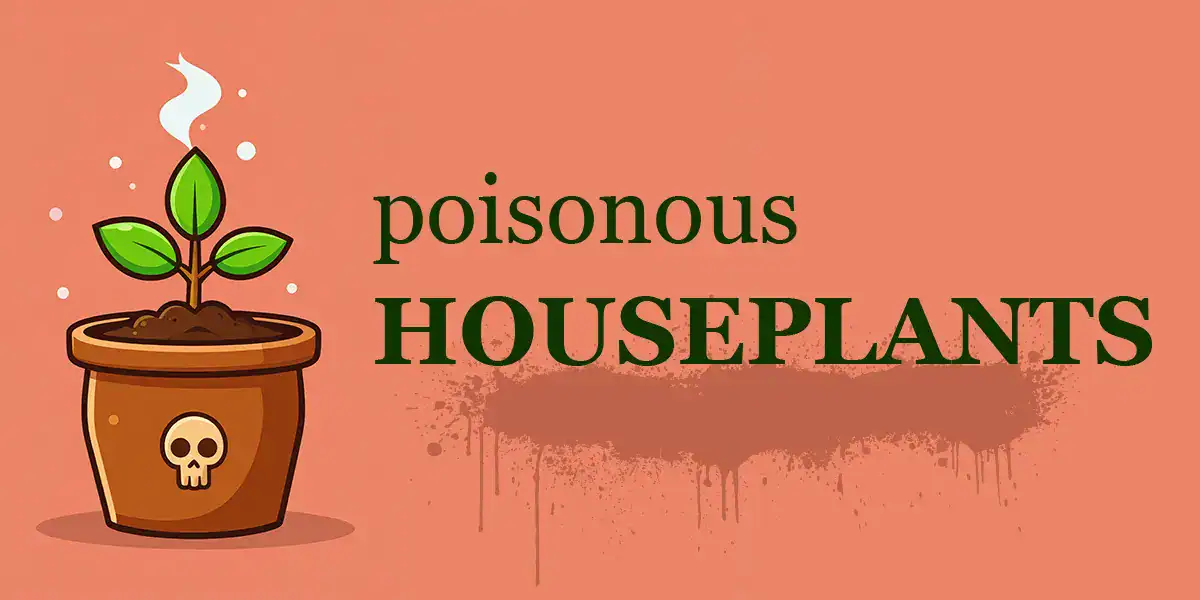Some beautiful things are deadly.
- The F-22 Raptor
- Japanese katana swords
- Box jellyfish
- Blue-ringed octopi
- Lava flows
You will rarely encounter them in your living room.
More common and a few rungs down the hazard scale are many popular houseplants. When ingested, they can cause severe discomfort and sometimes even organ damage.
Why Are Some Houseplants Toxic?
Many plants produce natural defenses to deter pests and herbivores. Cacti and roses bear thorns, while other plants rely on toxic compounds.
- Calcium oxalate crystals → microscopic shards that irritate the mouth and throat (e.g., peace lily, philodendron).
- Cardiac glycosides → disrupt heart function (e.g., oleander).
- Saponins → disrupt the digestive system (e.g., aloe vera).
- Alkaloids → affect the nervous system (e.g., Dieffenbachia).
“Look, don’t eat” makes perfect sense to adults, but not to kids and pets who explore the world through their mouths.
So, which common houseplants are potentially the most problematic?
16 Poisonous Houseplants
1. Peace Lily (Spathiphyllum)
- Toxin: Insoluble calcium oxalates
- Toxic to: Cats, dogs, humans
- Why it’s dangerous: It releases tiny needle-like crystals that irritate the mouth, throat, and digestive tract.
- Toxic effects: Excessive drooling, pawing at the mouth, vomiting, and difficulty swallowing.
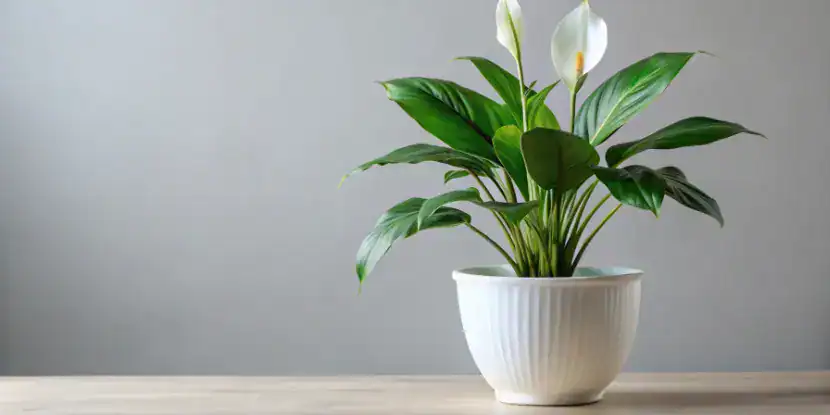
The peace lily blooms indoors and also helps filter toxins like formaldehyde from the air.
2. Dieffenbachia (Dumb Cane)
- Toxin: Calcium oxalate crystals + proteolytic enzymes
- Toxic to: Cats, dogs, humans
- Why it’s dangerous: Causes intense oral irritation, swelling of the tongue and throat, and in rare cases, difficulty breathing.
- Toxic effects: Oral pain, drooling, nausea, and temporary speech issues in humans (hence the name “dumb cane”).
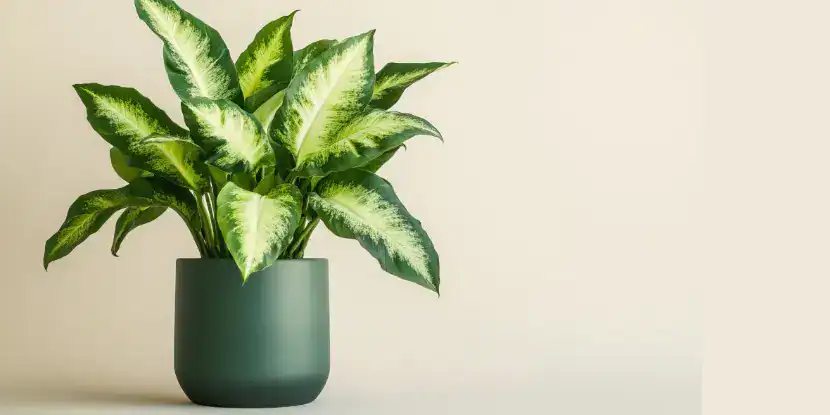
Also called “dumb cane,” Dieffenbachia’s sap can numb the tongue and temporarily impair speech if ingested.
3. Philodendron
- Toxin: Insoluble calcium oxalates
- Toxic to: Cats, dogs, humans
- Why it’s dangerous: Causes intense oral irritation, swelling of the tongue and throat, and in rare cases, difficulty breathing.
- Toxic effects: Burning, swelling, and irritation in the mouth, excessive drooling, and, if a significant amount is ingested, nausea, vomiting, or stomach cramps.
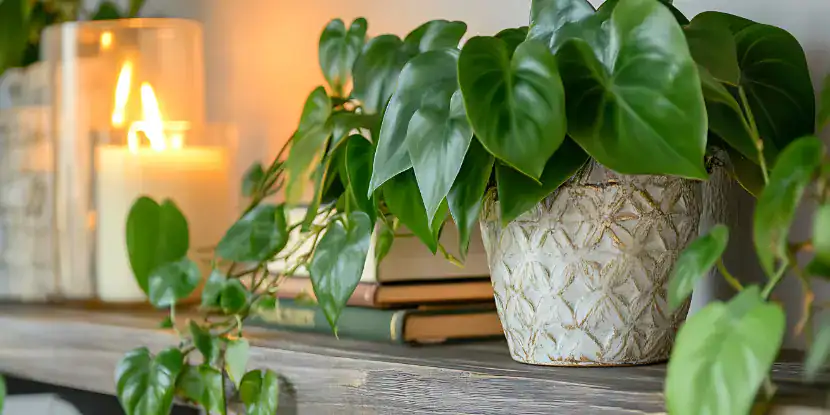
Heartleaf philodendron thrives on neglect and easily propagates from a stem cutting.
4. Pothos (Devil’s Ivy)
- Toxin: Insoluble calcium oxalates
- Toxic to: Cats, dogs, humans
- Why it’s dangerous: Chewing releases oxalates that burn the mouth and GI tract.
- Toxic effects: Mouth irritation, vomiting, drooling, and swelling of the lips and tongue.
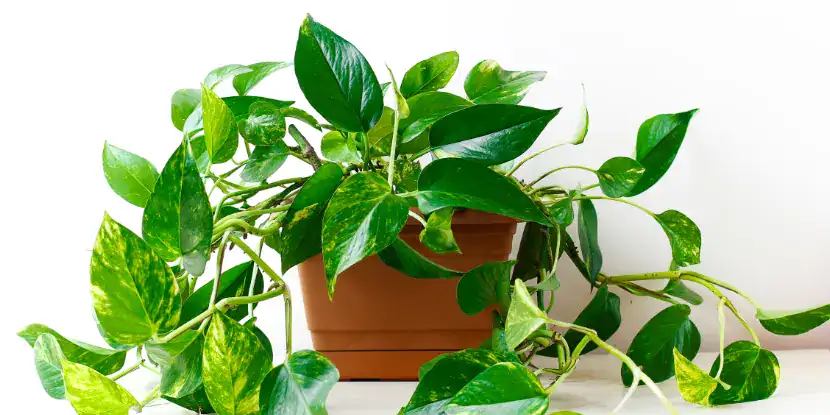
Pothos is nearly impossible to kill and can grow in very low light.
5. Aloe Vera
- Toxin: Saponins and anthraquinones
- Toxic to: Cats, dogs
- Why it’s dangerous: While aloe gel is soothing for humans, the latex in the leaves can cause vomiting, diarrhea, and lethargy in pets.
- Toxic effects: Digestive upset, tremors (in severe cases).
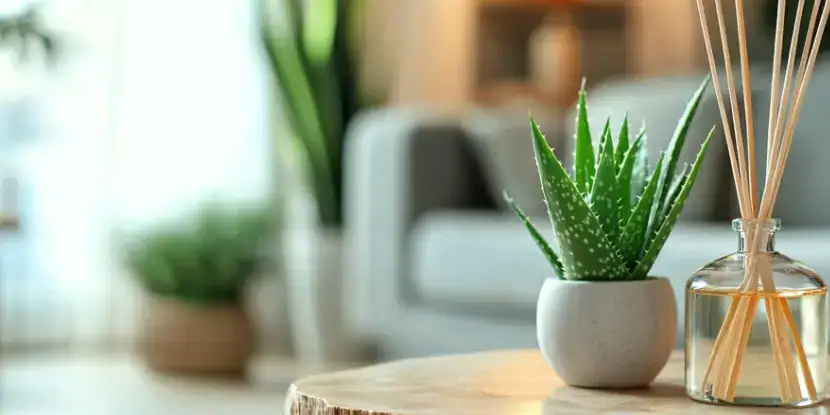
Aloe vera gel has been used for thousands of years to soothe burns and skin irritations.
6. Sago Palm (Cycas revoluta)
- Toxin: Cycasin
- Toxic to: Cats, dogs, humans
- Why it’s dangerous: Extremely toxic to pets (especially dogs), even in small amounts. Can cause liver failure.
- Toxic effects: Vomiting, diarrhea, seizures, and liver damage; can be fatal.
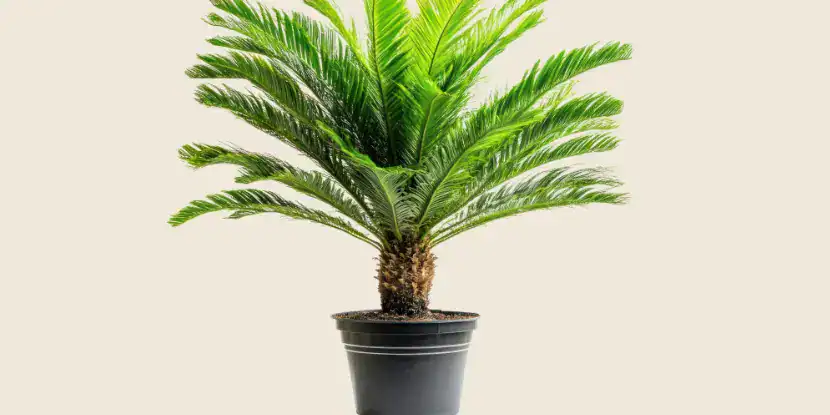
Sago palm is not a true palm but a cycad, an ancient plant group.
8. Caladium
- Toxin: Calcium oxalate crystals
- Toxic to: Cats, dogs, humans
- Why it’s dangerous: Similar irritation as Dieffenbachia; causes painful swelling.
- Toxic effects: Drooling, mouth swelling, difficulty breathing if swelling is severe.
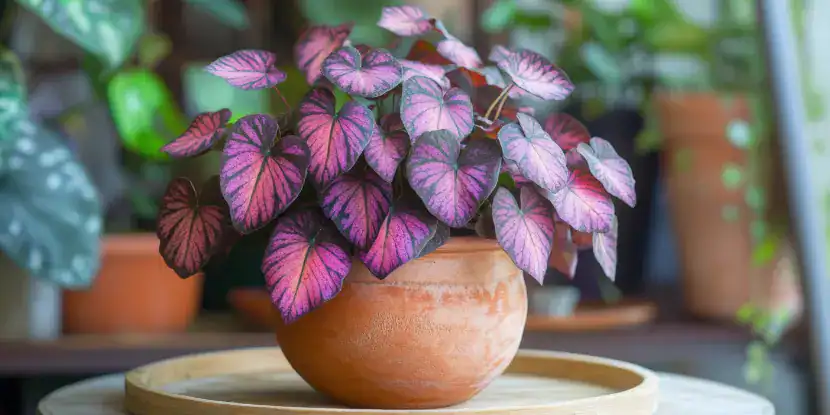
Also known as “angel wings,” caladium’s colorful leaves come in striking pinks, reds, and whites.
9. Snake Plant (Mother-in-Law’s Tongue)
- Toxin: Saponins, calcium oxalate crystals
- Toxic to: Cats, dogs, humans
- Why it’s dangerous: Can cause gastrointestinal upset and irritation of the mouth and throat.
- Toxic effects: Drooling, vomiting, difficulty swallowing.
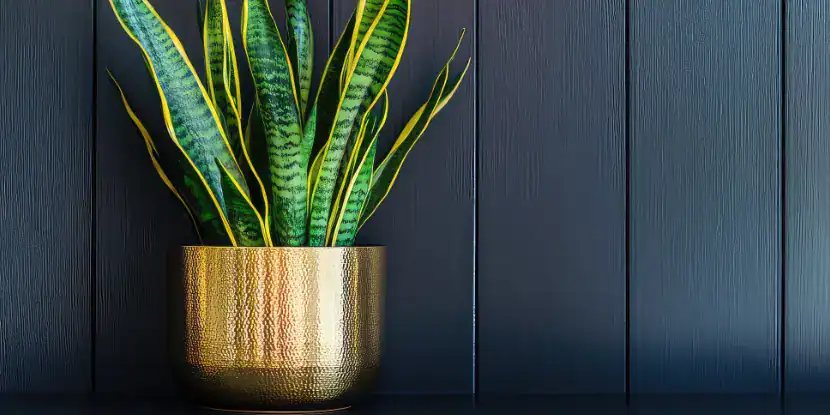
Snake plant is one of the few plants that converts CO2 to oxygen even at night.
10. Jade Plant (Money Tree)
- Toxin: Unknown compound that is toxic to cats and dogs
- Toxic to: Cats, dogs
- Why it’s dangerous: Causes vomiting and diarrhea if ingested in large amounts.
- Toxic effects: Vomiting, diarrhea, and, in rare cases, lethargy and depression in cats and dogs.
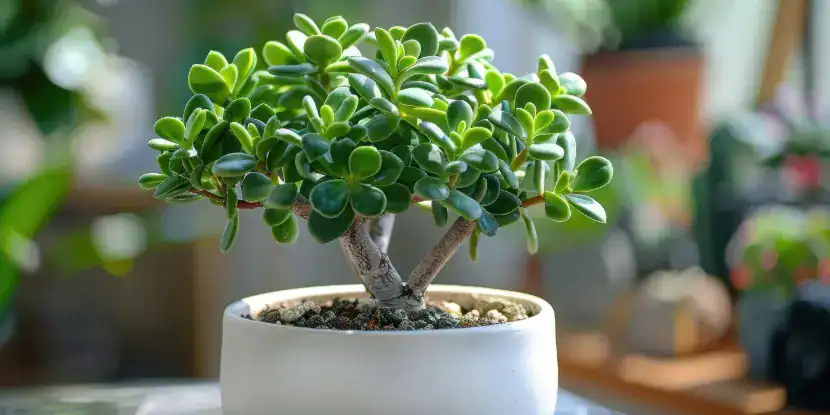
The jade plant, or the “money plant,” is believed to bring good luck and prosperity.
10. Monstera (Swiss Cheese Plant)
- Toxin: Calcium oxalate crystals
- Toxic to: Cats, dogs, humans
- Why it’s dangerous: Similar irritation as Dieffenbachia and Caladium; causes painful swelling.
- Symptoms: Drooling, mouth swelling, difficulty breathing if swelling is severe.
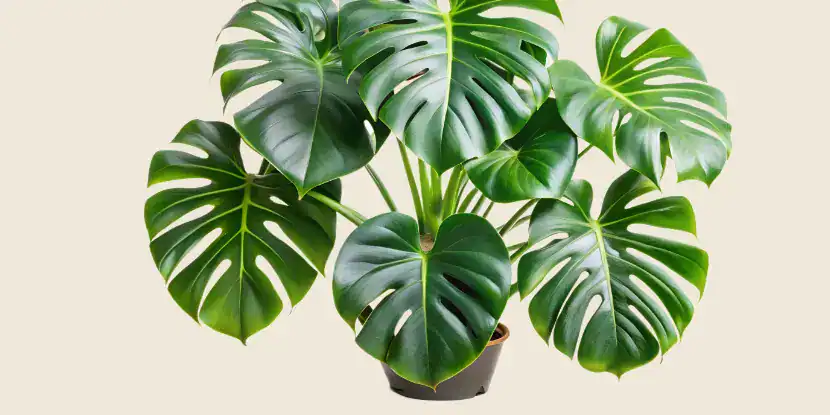
Monstera’s leaf holes help it withstand strong winds and allow light to reach lower leaves in dense jungles.
11. ZZ Plant (Zamioculcas zamiifolia)
- Toxin: Calcium oxalate crystals
- Toxic to: Cats, dogs, humans
- Why it’s dangerous: Similar irritation as Dieffenbachia and Caladium; causes painful swelling.
- Symptoms: Drooling, mouth swelling, difficulty breathing if swelling is severe.
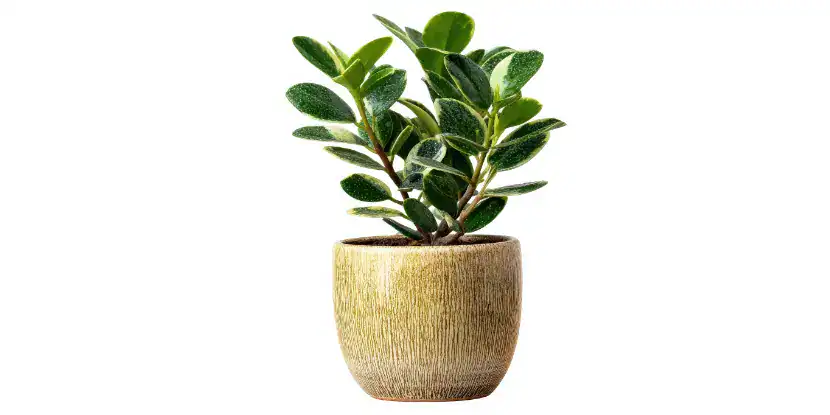
ZZ plant can survive months without water thanks to water-storing rhizomes beneath the soil.
12. English Ivy (Hedera helix)
- Toxin: Triterpenoid saponins, falcarinol
- Toxic to: Cats, dogs, humans
- Why it’s dangerous: Causes irritation and burning in the mouth and throat.
- Symptoms: Drooling, vomiting, difficulty breathing, if swelling is severe. Skin contact can also cause redness and itching.
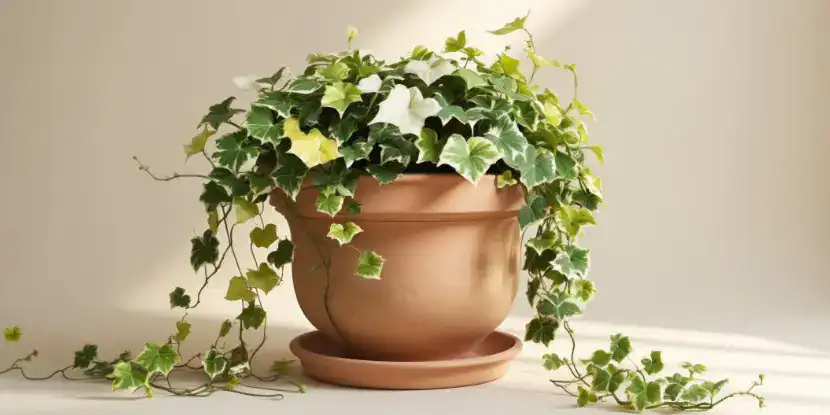
English ivy can climb walls and trees using tiny rootlets that act like natural suction cups.
14. Easter Lily (Lilium longiflorum)
- Toxin: Lycorine
- Toxic to: Cats
- Why it’s dangerous: Ingestion can cause kidney failure.
- Symptoms: Vomiting, lethargy, loss of appetite, dehydration. If left untreated, can cause kidney failure and death in cats.
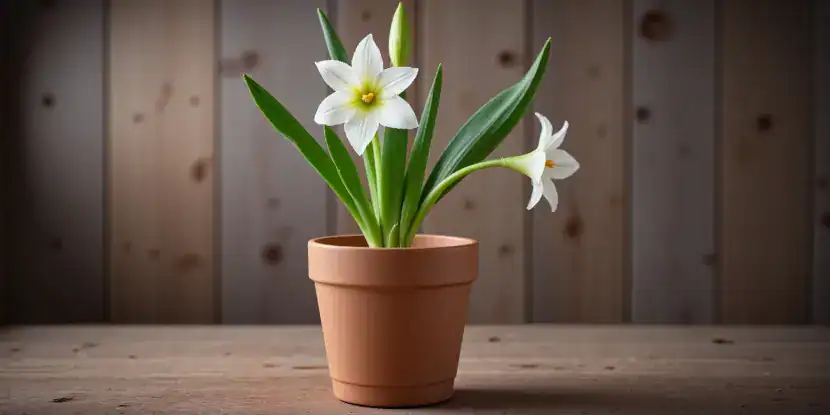
Easter lilies symbolize purity and rebirth, often blooming around the Easter holiday.
15. Tulip (Tulipa spp.)
- Toxin: Tulipalin A and B
- Toxic to: Cats, dogs
- Why it’s dangerous: Causes irritation and burning in the mouth and throat.
- Symptoms: Drooling, vomiting, difficulty breathing if the airway is affected. Ingestion of large amounts can lead to more serious problems like heart rhythm abnormalities and organ damage.
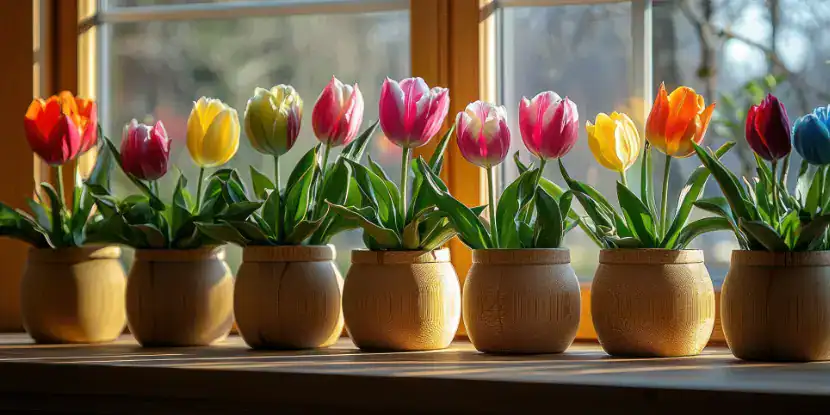
Tulips caused one of the first recorded economic bubbles during the Dutch “Tulip Mania,” when single bulbs sold for the price of a house.
16. Rubber Plant (Ficus elastica)
- Toxin: Latex, ficin
- Toxic to: Cats, dogs, horses
- Why it’s dangerous: Can irritate and inflame the mouth and gastrointestinal tract.
- Symptoms: Drooling, vomiting, loss of appetite, abdominal pain. In severe cases, it can cause difficulty breathing or collapse due to anaphylactic shock.
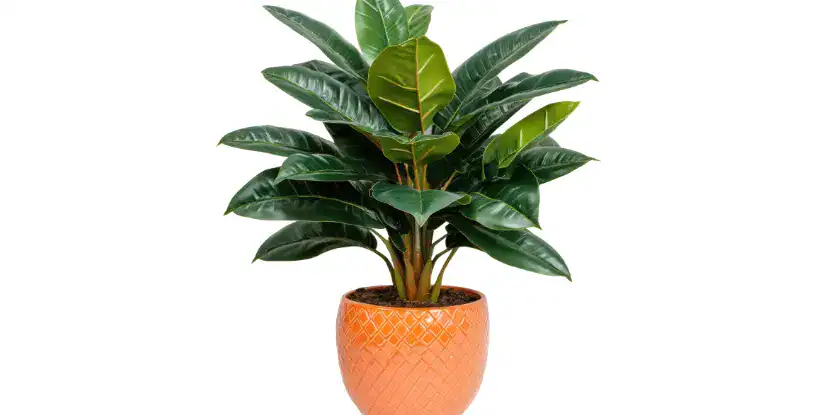
Ficus elastica produces a milky latex that was used to make rubber before synthetic alternatives became common.
Quick Safety Tips
- Keep these plants out of reach of pets and small children.
- If ingestion is suspected, call a vet or poison control immediately.
- Use pet-safe alternatives like spider plants, Boston ferns, or African violets.
- Supervise pets and children when outdoors to limit access to potentially harmful plants.
- Store gardening supplies, such as fertilizers and pesticides, in secure, pet- and child-proof containers.
- Consider labeling indoor and outdoor plants with their names to identify which are safe and which are toxic.
Pet- & Kid-Safe Houseplants
These plants don’t contain calcium oxalates, cardiac glycosides, or other dangerous compounds. Even if nibbled, they won’t cause harm beyond mild stomach upset (if any).
1. Spider Plant (Chlorophytum comosum)
- Why it’s great: Hardy, easy to grow, and helps clean indoor air.
- Care: Tolerates low light and irregular watering.
2. Areca Palm (Dypsis lutescens)
- Why it’s great: A lush, tropical look without toxicity.
- Care: Prefers bright, indirect light and moderate watering.
3. Parlor Palm (Chamaedorea elegans)
- Why it’s great: Low maintenance and safe for curious pets.
- Care: Thrives in low to medium light and doesn’t need frequent watering.
4. Calathea (Prayer Plant)
- Why it’s great: Stunning leaf patterns, non-toxic to pets.
- Care: Loves humidity and indirect light.
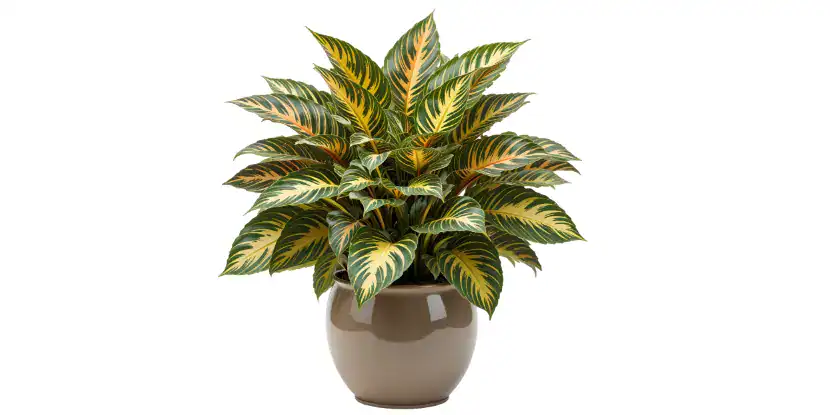
The striking Calthea plant is a non-toxic alternative to Dieffenbachia.
5. Boston Fern (Nephrolepis exaltata)
- Why it’s great: A soft, classic plant safe for cats and dogs.
- Care: Needs more humidity and consistent moisture.
6. Bamboo Palm (Chamaedorea seifrizii)
- Why it’s great: Air-purifying and completely safe.
- Care: Medium to bright indirect light; moderate watering.
7. African Violet (Saintpaulia)
- Why it’s great: Beautiful flowering plant that’s harmless to pets.
- Care: Prefers indirect light and lightly moist soil.
8. Cast Iron Plant (Aspidistra elatior)
- Why it’s great: Nearly indestructible and non-toxic.
- Care: Can survive low light, drought, and neglect.
9. Polka Dot Plant (Hypoestes phyllostachya)
- Why it’s great: Colorful, safe, and compact.
- Care: Needs bright, indirect light and moderate watering.
10. Friendship Plant (Pilea involucrata)
- Why it’s great: Cute trailing plant that’s totally safe.
- Care: Likes humidity and indirect light.
FAQs: Toxic Houseplants
Q: Should I avoid houseplants entirely if I have pets or kids?
No, but choose non-toxic varieties like Boston ferns, spider plants, or parlor palms.
Q: What should I do if my pet eats a toxic plant?
Contact your veterinarian immediately for guidance.
Q: Can toxic houseplants harm someone by touch alone?
Some may irritate skin or eyes on contact, but ingestion poses greater risks.
Q: Are there safe alternatives to common toxic plants?
Yes! Swap pothos for a heartleaf philodendron or replace peace lilies with white orchids.
Q: How do I make plants inaccessible to pets and children?
Use hanging planters, elevated shelves, or rooms they can’t access.
Q: Are artificial plants a safer alternative?
Artificial plants eliminate toxicity risks but lack the air-purifying benefits of real ones.
Q: How can I know if my houseplants are toxic?
Research their botanical name or consult with your local nursery for accurate information.
Q: Do all parts of a plant contain toxins?
It varies. Some plants, like sago palms, are toxic in all parts, while others concentrate toxins in leaves or seeds.

